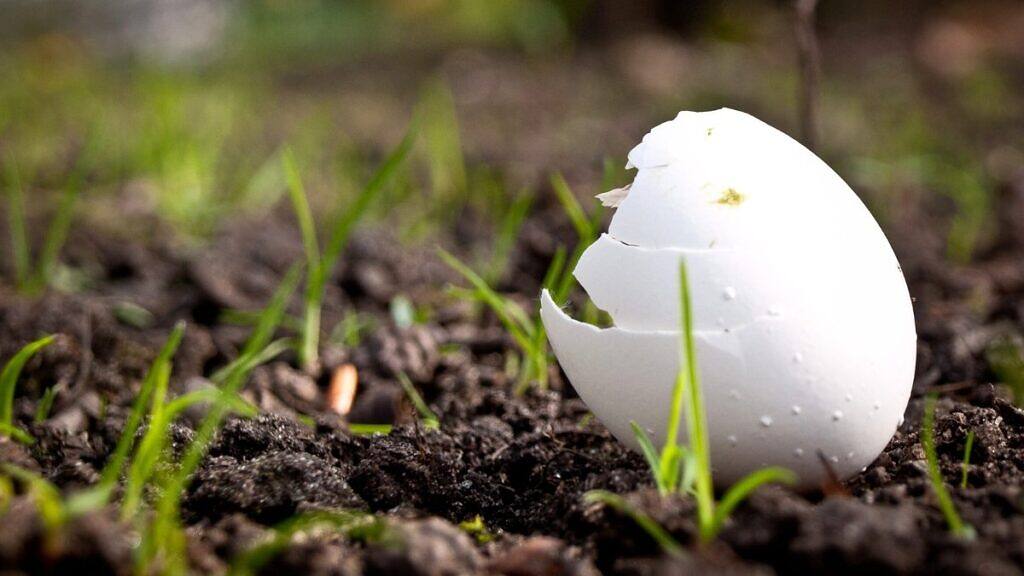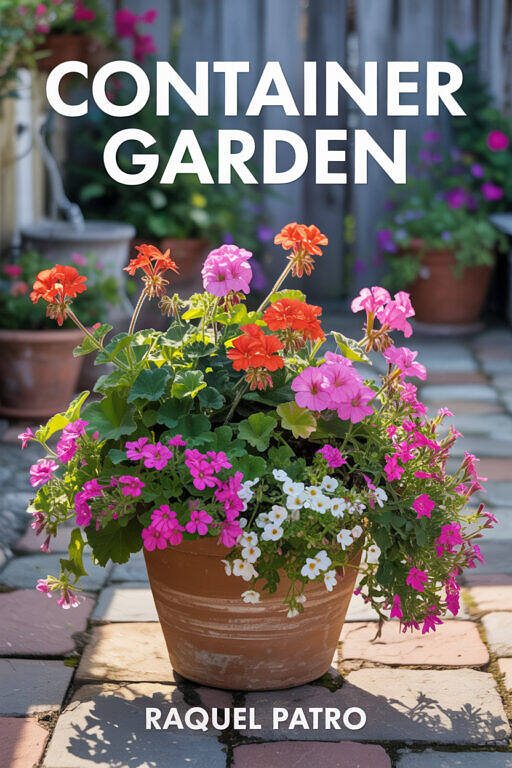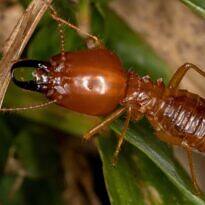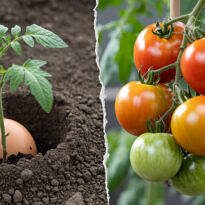You’re probably doing it the wrong way
If you are one of those people, like me, who has tried using eggshells on plants by simply crushing them with your hands and scattering them over the soil, this article is for you. The truth is that most people make this basic mistake which makes this valuable organic waste virtually useless for their plants.
Eggshells are not just “organic waste” – they are a concentrated source of nutrients that, when properly prepared, can revolutionize the health of your garden. But here is the problem: throwing large pieces of shell over the soil is almost like doing nothing, besides leaving a somewhat strange appearance in the garden. Want to know why and how to do it the right way? Keep reading and discover how to turn something you throw away into a powerful ally for your plants.
1. Nutritional Composition of Eggshells
Eggshells are real nutrient powerhouses that most people simply discard without knowing their fertilizing potential:
- 95% calcium carbonate – essential for strengthening plant cell walls
- Magnesium – crucial for chlorophyll production
- Phosphorus – important for root development and flowering
- Potassium – strengthens plant resistance to diseases
- Nitrogen – in small amounts from the residues of egg white adhered to the shell
- Traces of other minerals such as iron, zinc, and manganese
Calcium is the main player here, representing about 40% of the dry weight of the shell, while nitrogen, although in smaller quantities, contributes to the initial foliar growth of the plants. To give you an idea, a single eggshell contains about 2 grams (roughly 0.07 oz) of calcium – enough to nourish a medium-sized plant for weeks. This rich and balanced composition makes eggshells a complete and natural fertilizer for most plant species.

2. Benefits for Plants
- Structural Strengthening – Calcium strengthens cell walls, resulting in hardier plants and firmer stems.
- Disease Prevention – Particularly effective against blossom end rot in tomatoes, peppers, and eggplants.
- Soil pH Improvement – Helps neutralize acidic soils, creating ideal conditions for most plants.
- Root Growth Stimulation – Calcium promotes the development of stronger and more extensive roots.
- Natural Protection – When applied correctly, it can help repel slugs and snails due to its abrasive texture.
Calcium in eggshells acts as a true “vitamin supplement” for plants, strengthening their structure from the roots to the leaves. This fortification is reflected not only in the plants’ more vigorous appearance but also in their ability to withstand environmental stresses such as strong winds and climate change. Regular application of eggshell powder can transform weak, disease-prone plants into robust and healthy specimens.
It is important to note that the effect of eggshells is directly linked to the initial soil pH. In very acidic soils, calcium acts as a natural corrector, softening the acidity and creating a more favorable environment for most plants. However, in neutral or slightly alkaline soils, excessive use can cause an imbalance, raising the pH too much and hindering the absorption of essential micronutrients like iron and manganese. Therefore, it is advisable to measure the soil pH before fertilizing, even if only with simple home gardening kits.
3. How to Collect and Prepare Eggshells

The first step is to clean immediately after breaking the egg, as dirty shells can attract flies, ants, and even rodents.
Here is the complete process:
Collecting the shells:
- Immediate cleaning – Quickly rinse under running water to entirely remove residues of egg white and yolk.
- Initial drying – Allow to dry naturally in open air.
- Storage – Store in a ventilated container, never in a sealed plastic bag.
Final processing:
- Complete drying – Leave in the sun for 24-48 hours.
- Grinding – Use a blender, food processor, or mortar and pestle to turn into a fine powder.
- Sieving – Pass through a fine sieve to obtain a uniform texture.
An interesting alternative is oven drying or even controlled charring on a grill, pizza oven, or fire pit, always utilizing the heat from cooking another food to maintain your sustainable and economical shell-based fertilizer. This heat treatment reduces residual odors and produces an even finer powder when ground; however, these heat methods can result in the loss of some of the nitrogen present in the shells.
Proper preparation of the shells is what differentiates an effective fertilizer from simple organic waste. Investing time in proper cleaning and drying not only ensures nutritional efficacy but also prevents sanitary issues that could compromise the entire process. Patience at this stage will be rewarded with superior outcomes for the health of your plants.

4. What DOES NOT Work and Why
Whole or poorly broken shells are virtually useless due to their extremely slow decomposition, potentially taking years to fully decompose in the soil. In other words, if you simply throw them whole into the earth, or just slightly broken, they will remain like that for many, many years, without releasing the powerful nutrients into the soil. Nutrient release is restricted because minerals remain “trapped” within the rigid structure of the shell, while the reduced contact surface significantly hinders absorption by plant roots. Additionally, remnants of slowly decomposing organic matter may attract unwanted insects such as flies and fungus gnats, as well as fostering the growth of molds, and, worst of all, rats.
The fundamental rule is simple: the finer the powder, the more effective the application, and the more quickly the nutrients will be available to the plants.
Large pieces of shell can even create physical barriers that prevent proper root growth, especially in smaller pots. Therefore, investing time in the correct processing of the bark is not optional—it is essential to achieve the desired results.
5. Application Methods (Always in Powder Form)
Eggshell powder acts similarly to marine calcitic limestone but releases calcium more slowly and has a buffering effect on pH because it depends on particle size and soil biological activity. Thus, the doses should be smaller and more spaced out than common fertilizations, precisely to avoid excessive pH, which can harm plants by impairing the absorption of other nutrients.
Eggshell powder can be applied in various ways, each suitable for different types of plants and situations:
a) Lawn
- Amount: 5–10 g (0.18–0.35 oz) of powder per m² (not more than this, to prevent rapid alkalization).
- Application: Distribute evenly and water.
- Period: Late autumn or early spring (once a year is sufficient).
b) Flower beds
- Amount: 1/2 tea spoon per medium-sized plant.
- Application: Mix lightly into the soil, without touching the stem.
- Frequency: Every 4–6 months, only for species that tolerate neutral to slightly alkaline soils.
c) Trees, shrubs, and climbers
- Amount: 1 teaspoon for small seedlings, up to 1 tablespoon for mature plants.
- Application: Spread in a circle away from the trunk, incorporate lightly.
- Time: Early spring or autumn, max. 2 times a year.
d) Plant pots
- Amount: A pinch (1/4 tea spoon) in small pots and up to 1/2 tea spoon in large pots.
- Application: Mix into the potting mix during repotting or sprinkle on the surface.
- Care: Do not use in excess—pots have a limited volume of potting mix.
- Water well after application.
e) Home gardening
- Planting: ½ teaspoon per planting hole, mixed with the potting mix.
- Tomatoes, bell peppers, and eggplants: benefit from an extra application because calcium helps prevent “blossom end rot”.
- Maintenance: Lightly sprinkle every 3-4 months.
f) Composting
- Ratio: 1-2 tablespoons for every 2.64 gallons (10 liters) of organic material.
- Benefit: Helps balance the acidity and enrich the compost, without exaggeration.
g) Preparing potting mixes
- Ratio: Maximum of 1% of the total volume of the substrate (much less than agricultural lime).
- Mixing: Combine with soil, humus, and sand.
- Use: Good for seedlings that need extra calcium, but avoid in plants that prefer acidic soils.
The versatility of powdered eggshells allows their use in virtually all gardening situations, from small apartment pots to large gardens and vegetable patches. The secret is to adapt the amounts to the size of the plant and the specific conditions of each environment, always observing the plant reactions to adjust future applications. Regardless of the chosen method of application, the main rule is to always maintain a fine powder form to ensure maximum nutritional efficiency.

The rate at which the nutrients from the eggshell become available also depends on the life present in the soil. Earthworms, fungi, and beneficial bacteria break down the powder particles and slowly release calcium and other minerals. In soils that are poor in organic matter or very compacted, this process is slower, and results may take longer to appear. In soils rich in humus and with good active microbiota, decomposition is accelerated, making powdered eggshell a constant and balanced source of nutrients over the months.
Which Plants NOT to Apply Eggshells On (Acid-Loving)
Some plants prefer acidic soil and can be negatively affected by the calcium from eggshells, including azaleas and rhododendrons, hydrangeas, blueberries, camellias, gardenias, bromeliads, orchids, ferns, and begonias. These plants thrive in a pH between 4.5 and 6.0, and the calcium from the shells can raise the soil pH too high, causing nutritional deficiencies and leaf yellowing.
It is essential to know the pH preferences of your plants before applying any calcium-based fertilizers. For acid-loving plants, prefer fertilizers that maintain or lower soil pH, such as pure coffee grounds or organic compounds specifically for acidic plants. The mistake of applying eggshells to these plants can result in iron deficiency and other micronutrient issues, seriously compromising their health and development.

Frequency and Correct Amount
Frequency by Plant Type
- Annual Plants:
1 light application when preparing the bed and, if necessary, reapply only after 3–4 months. - Perennial Plants:
1 application every 4–6 months, always in small amounts. - Lawn:
Up to 2 times per year (spring and fall), in reduced doses.
Recommended Quantities
- Seedlings and young plants: up to ¼ teaspoon (not a tablespoon).
- Medium-sized plants: about ½ teaspoon.
- Large plants: 1 teaspoon.
- Fruit trees: no more than 1 tablespoon distributed in a wide circle, never touching the trunk.
Signs of Excess
- Yellowed leaves (chlorosis due to deficiency of iron, magnesium, or potassium).
- Reduced growth and appearance of impoverished soil.
- White crust or hardening of the soil surface.
Important Observation
Eggshell powder acts slowly, therefore, less is more. Careful observation of the plants is crucial to adjust the fertilization program. Remember that more is not always better – excess calcium can block the absorption of other essential nutrients, creating secondary deficiencies that harm plant development. It is always better to start with smaller amounts and gradually increase them as the plants respond positively.
8. How to Store
The eggshell powder should be kept in an airtight glass container or tightly sealed plastic bag, in a dry and ventilated environment, and can be preserved for up to one year without losing its nutritional properties, provided the preparation date is noted on the package. For whole shells still awaiting processing, use a cardboard box or paper bag in a dry and ventilated environment, avoiding any moisture that can cause fungi and process the material within a month to maintain quality.
Proper storage is as important as correct preparation, as it ensures that all the cleaning and processing work is not wasted. Moisture is the main enemy of eggshell powder, causing lump formation and even the development of fungi that make the material unsuitable for use. Therefore, always ensure the containers are completely dry before storing the processed powder.
9. Natural Fertilizers that Can Complement

Eggshells work exceptionally well when combined with other organic fertilizers that meet different nutritional needs of the plants:
Wood Ash:
- Source of potassium and phosphorus
- Use sparingly (1 teaspoon per application)
- Avoid in acid-loving plants
Worm Castings:
- Provides organic matter, as well as essential macro and micronutrients
- Mix with eggshell powder before application
Aged Manure:
- Provides nitrogen and organic matter
- Apply separately from the eggshells
- Interval of 15 days between applications to avoid competition
- Never use fresh or unaged manure
Organic Compost:
- Excellent source of nitrogen and organic matter
- Adds humic and fulvic acids that accelerate plant development
- Improves the profile of plant-friendly microorganisms in the soil
Can I use fruit, vegetable, and legume scraps in the garden?
If you are using eggshells in your garden, it’s natural to also want to reuse fruit peels, vegetable scraps, and legumes – a practice that is equally excellent and complements the use of eggshells. These organic materials are rich in various nutrients plants love, including potassium from banana peels, nitrogen from green vegetable scraps, and a wide range of essential micronutrients. However, just like eggshells need to be turned into fine powder, these other organic residues should not be used directly in the garden without proper processing, which is called composting. Throwing raw food scraps directly onto the soil can attract pests, generate foul odors, and even harm the plants due to uncontrolled decomposition that can “burn” the roots or create unsuitable soil conditions.
The smart combination of different natural fertilizers creates a complete nutritional program that meets all the needs of plants throughout their life cycle. Each fertilizer has its ideal moment of application and its specific function, and understanding these particularities allows one to create a truly healthy and productive garden using only natural and sustainable resources.

For those wishing to delve deeper into the theme of soil acidity correction and the use of natural sources of calcium, USDA provides reference technical materials, widely used by farmers and experts in sustainable management.
Now you are an expert!
Eggshells are a valuable resource that goes far beyond simple waste reuse. When prepared and applied correctly – always in the form of fine powder – they become a potent and natural fertilizer that can transform the health of your plants.
Remember: the secret is not in throwing broken shells over the soil, but in properly processing this material to make its nutrients available efficiently. With the correct techniques for preparation, application, and storage, you will have a powerful ally to keep your garden, vegetable garden, or potted plants always healthy and vigorous.
Start saving your eggshells today – your plants will thank you!







